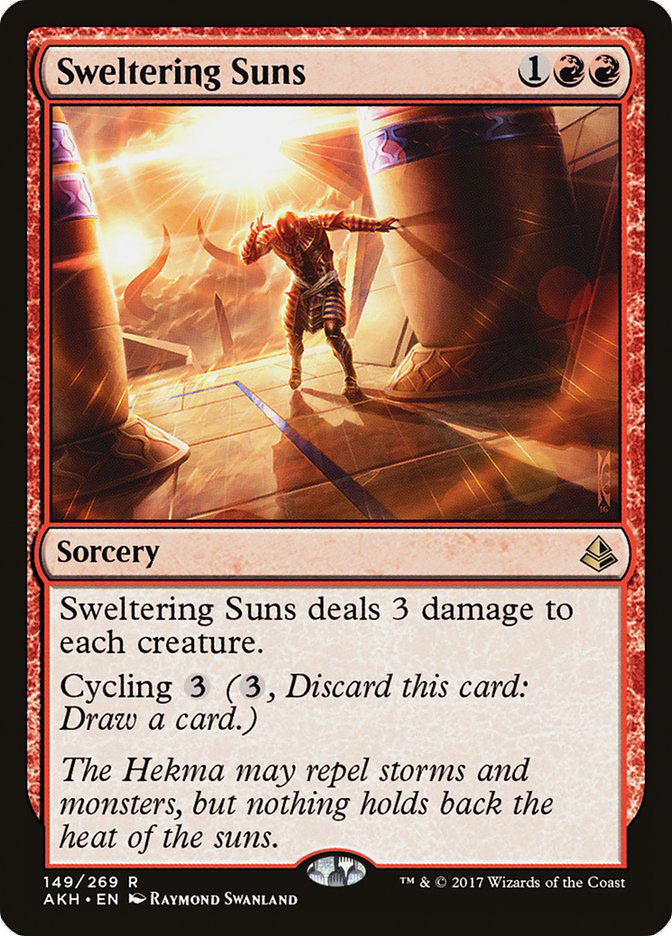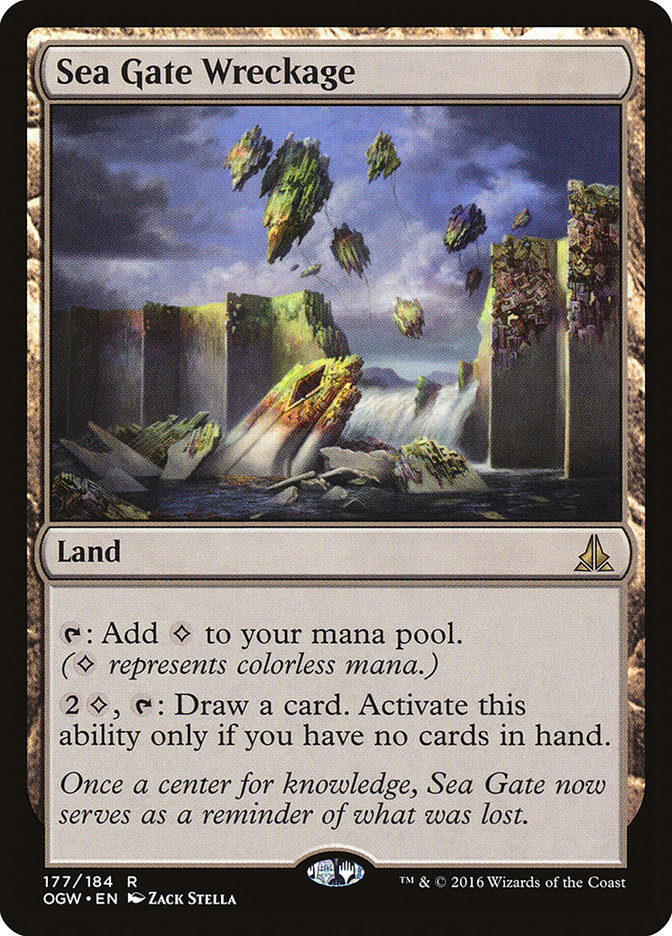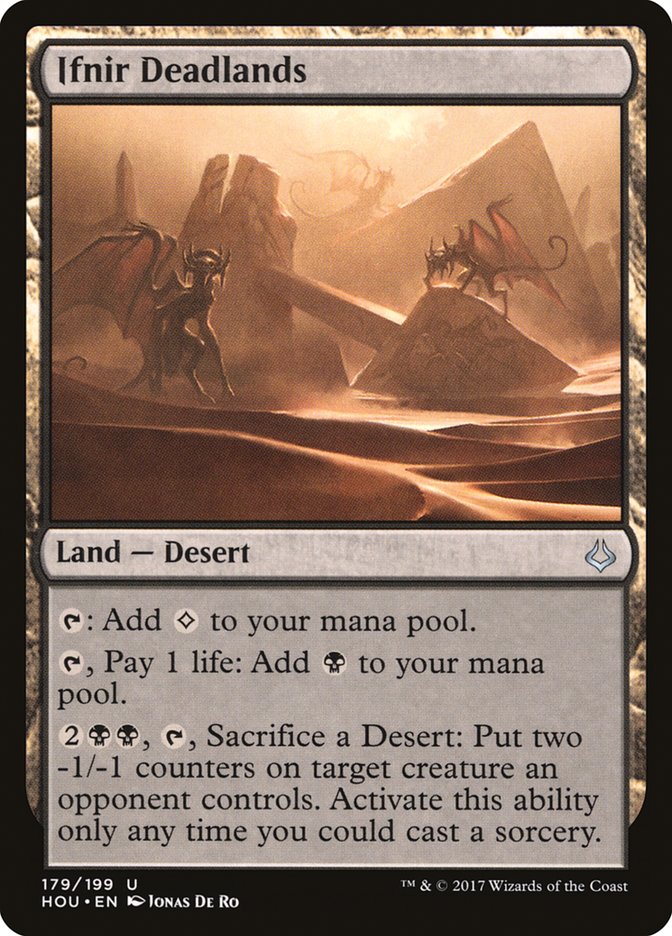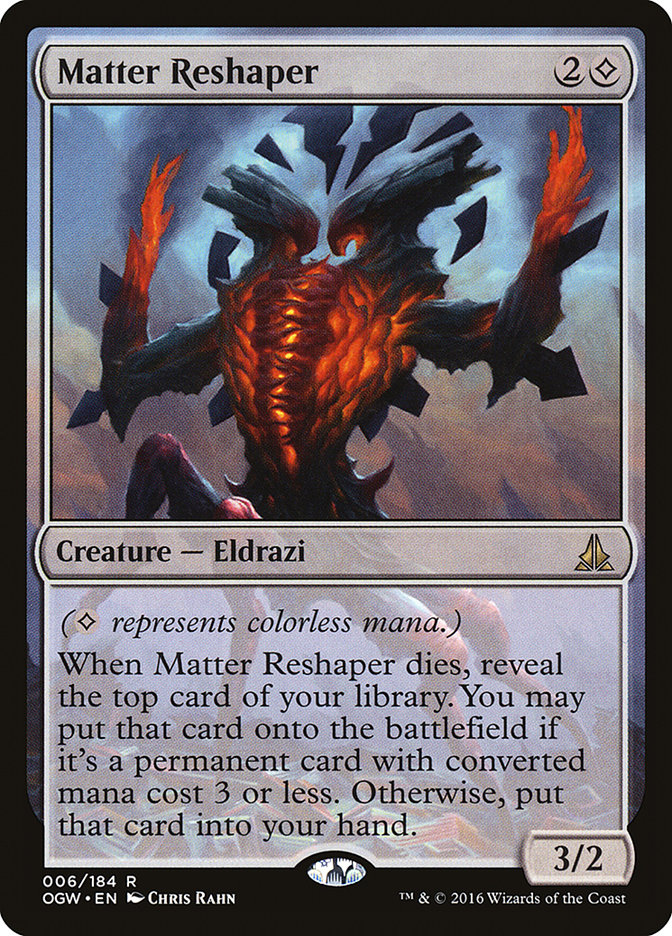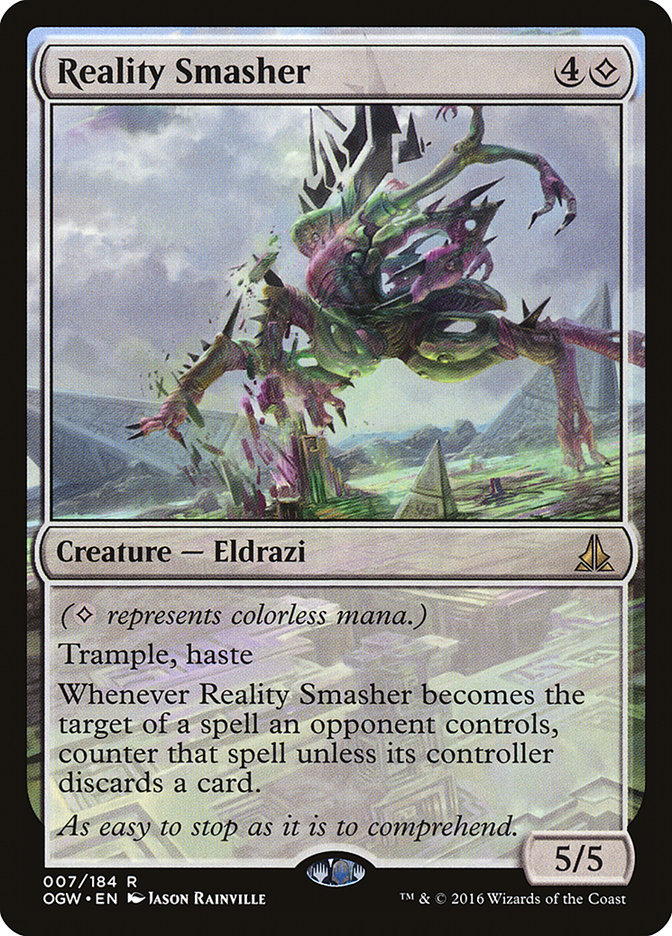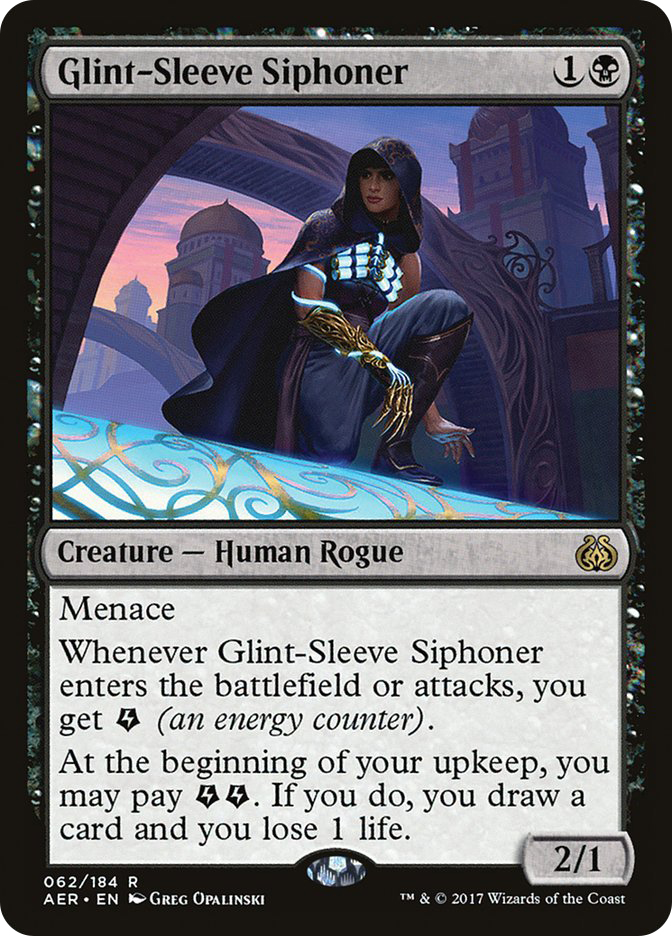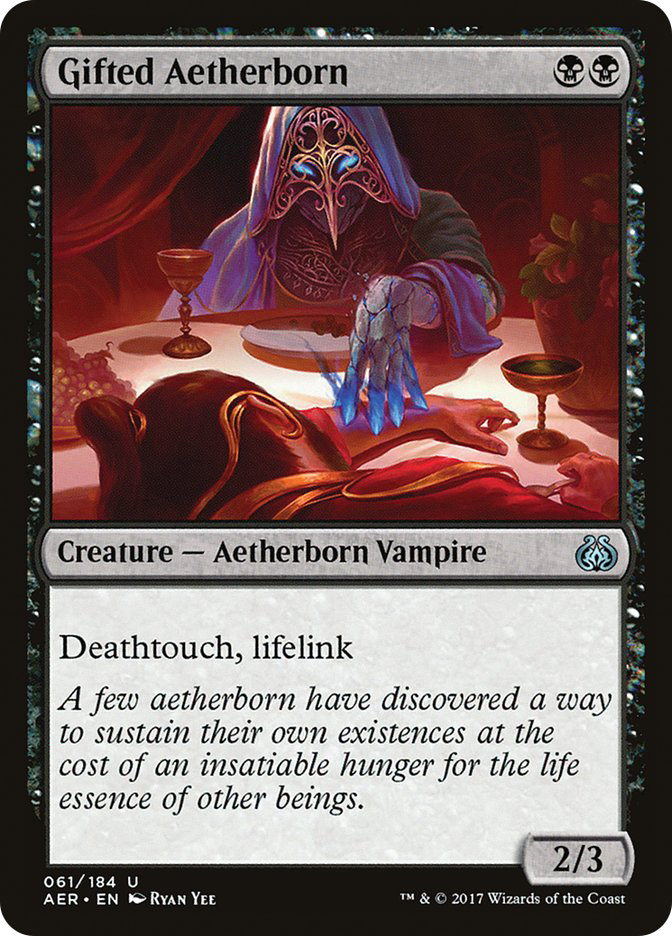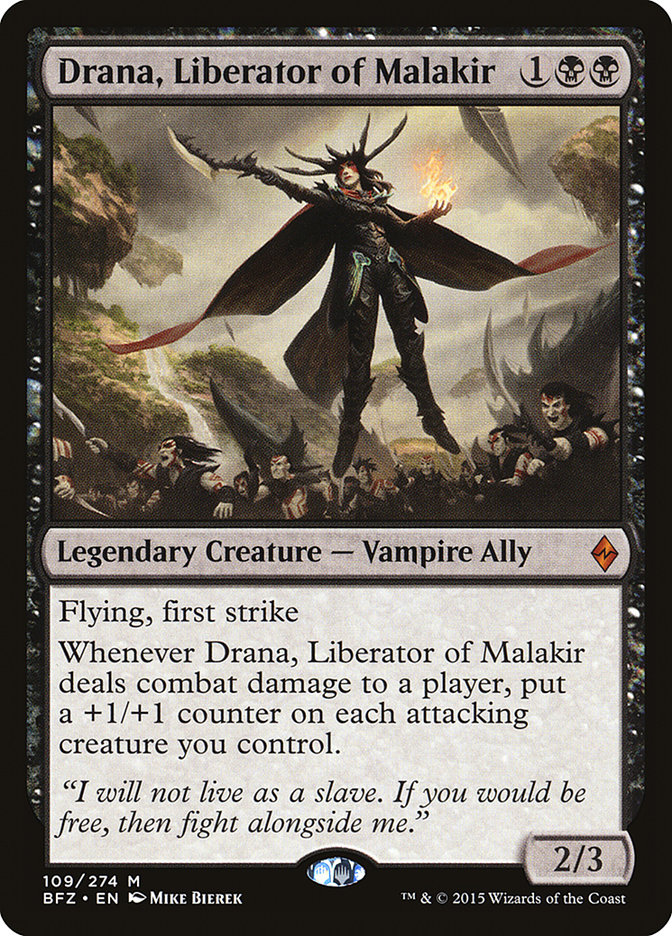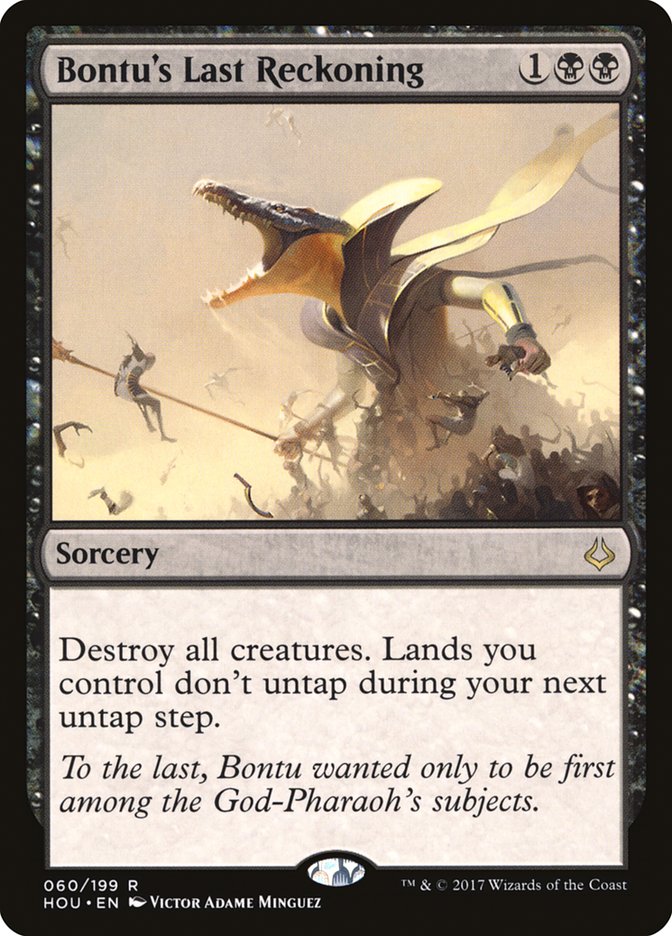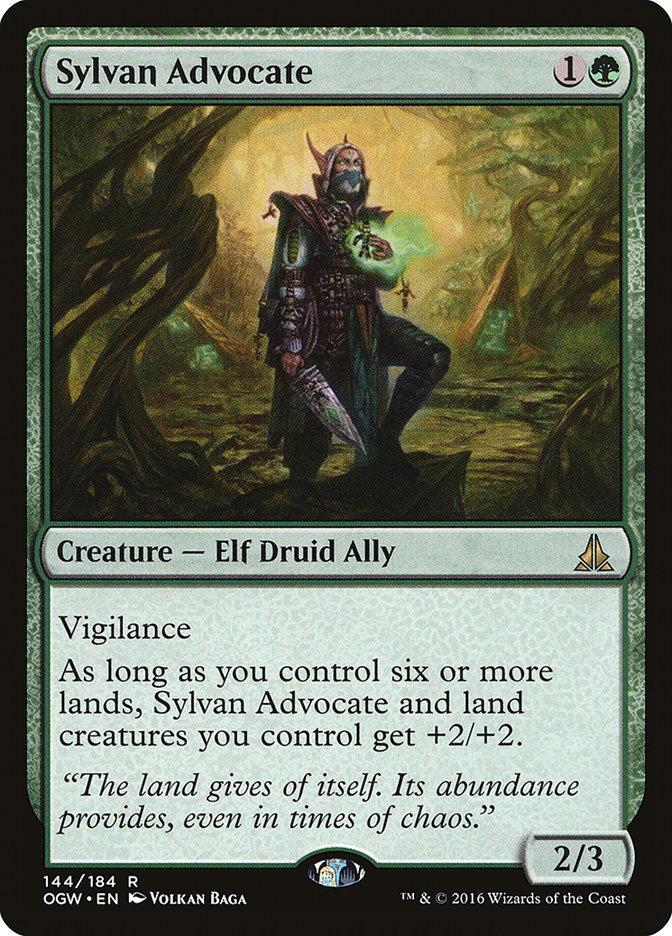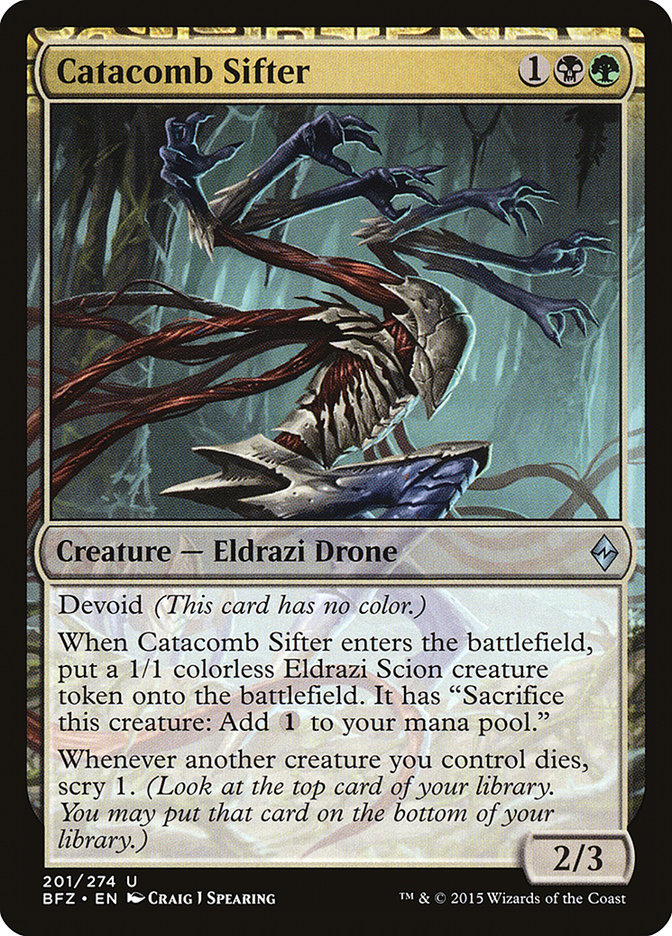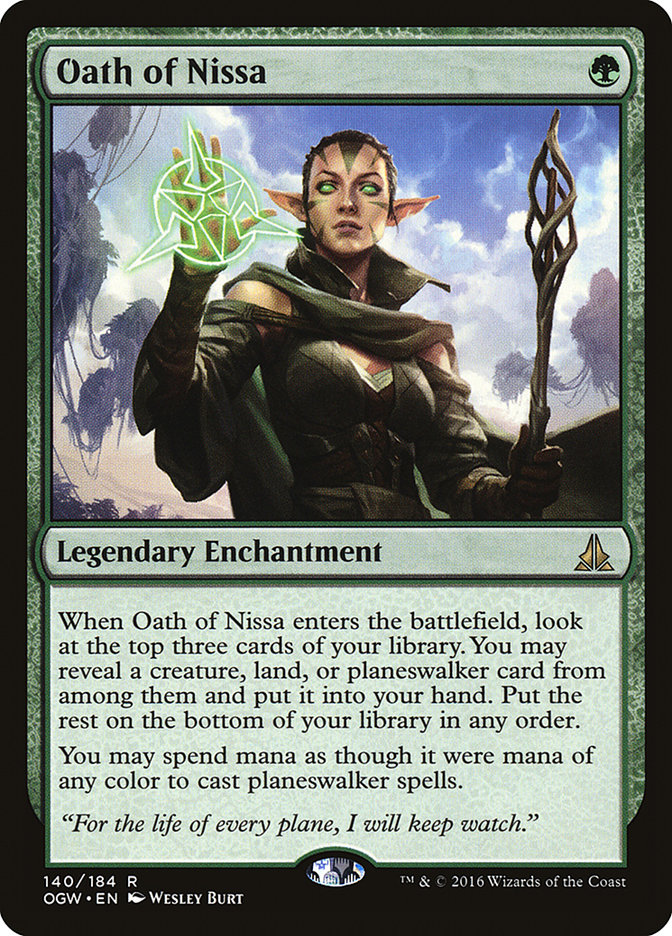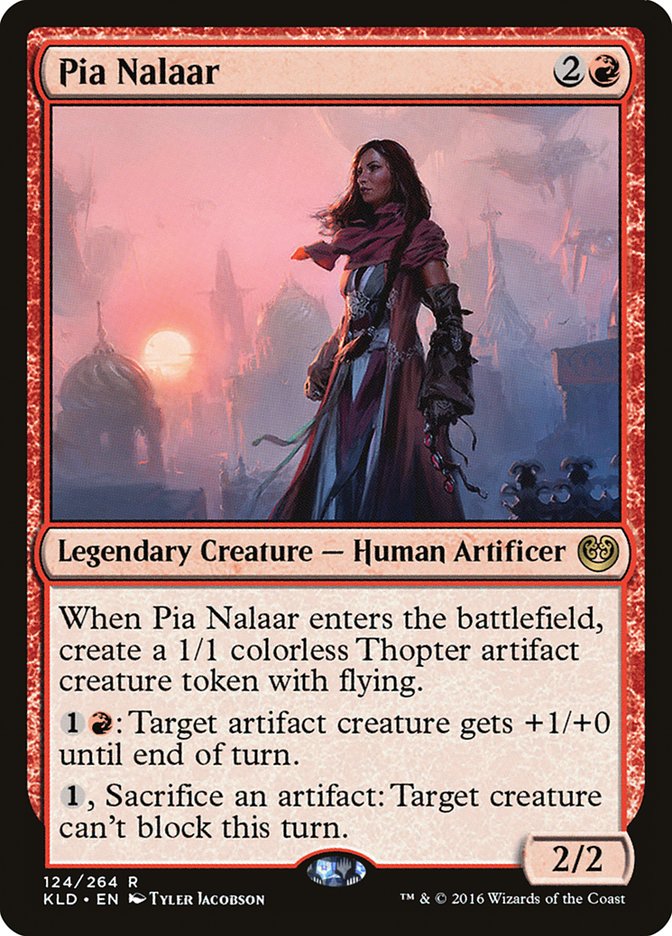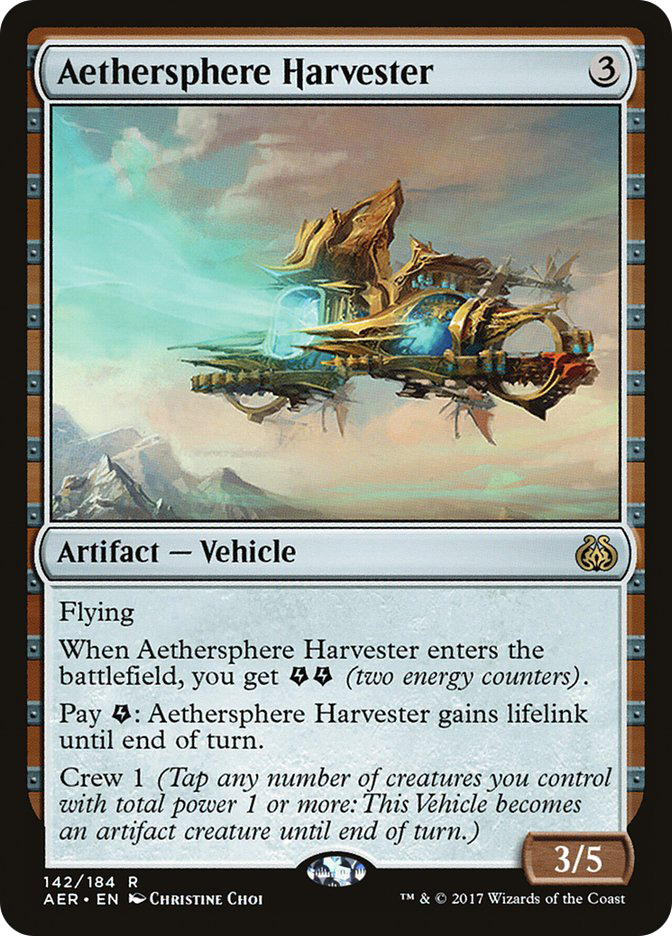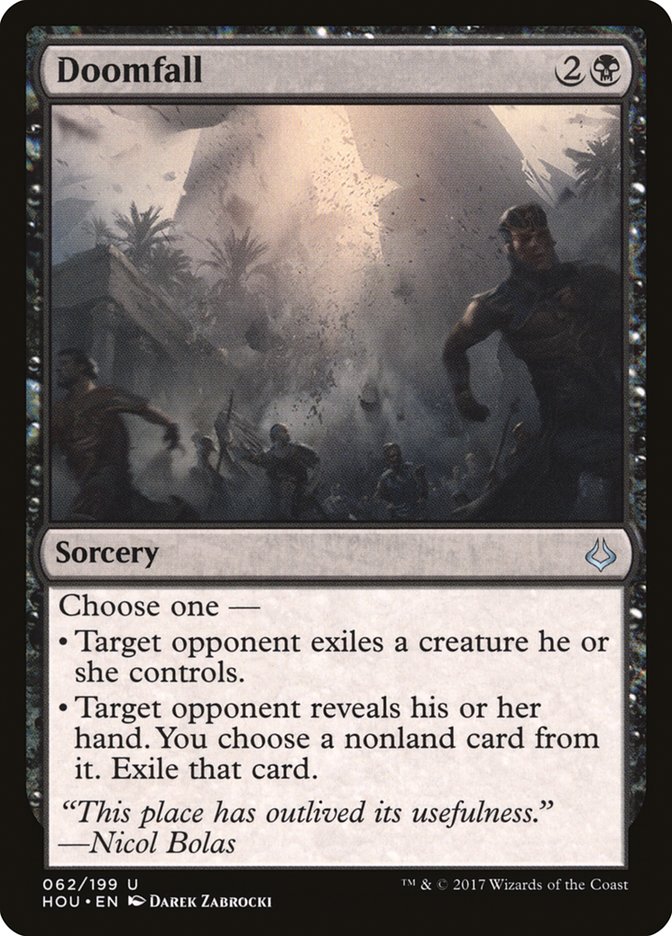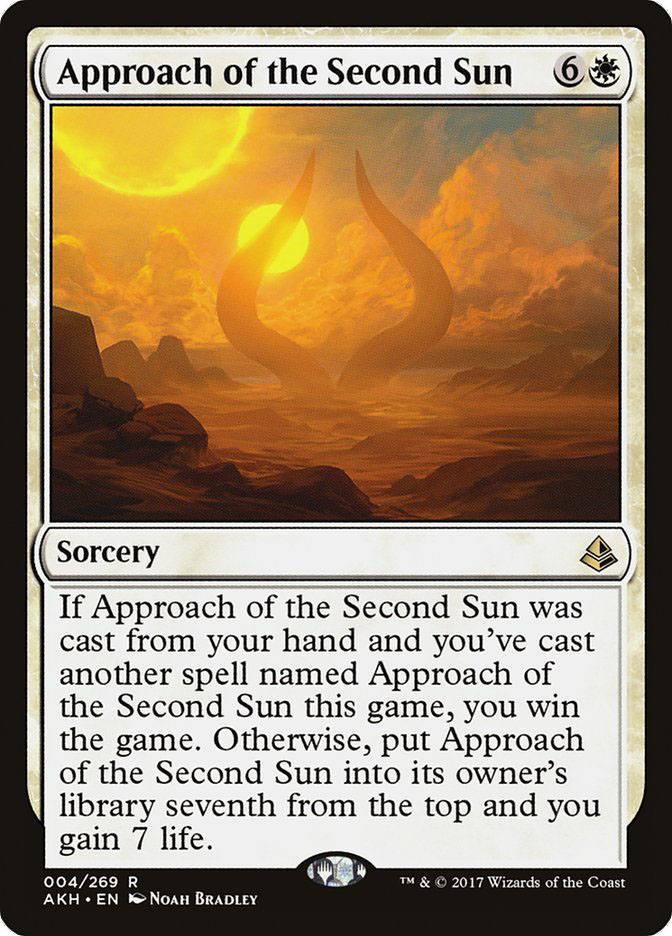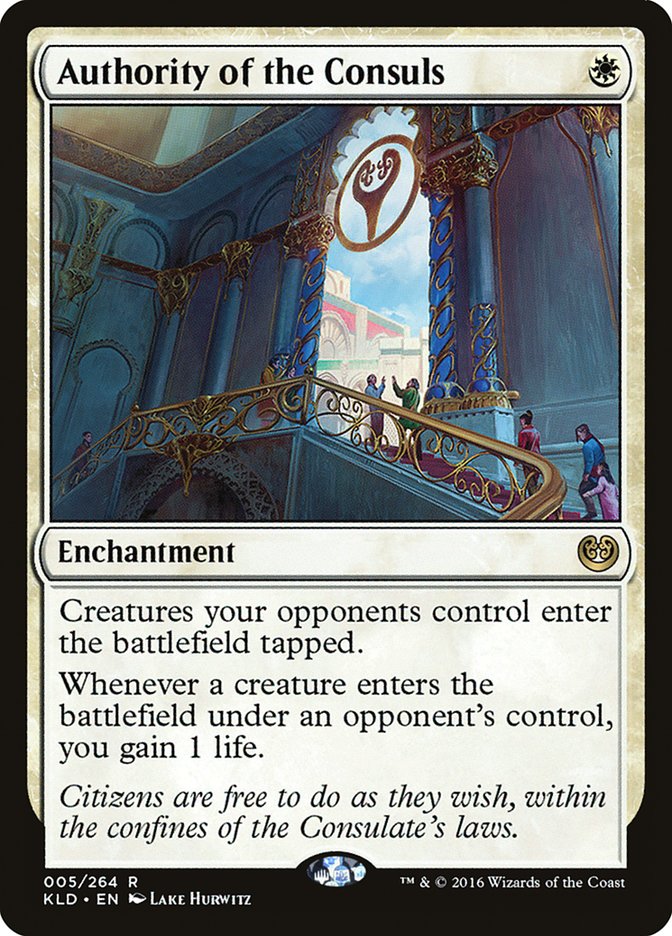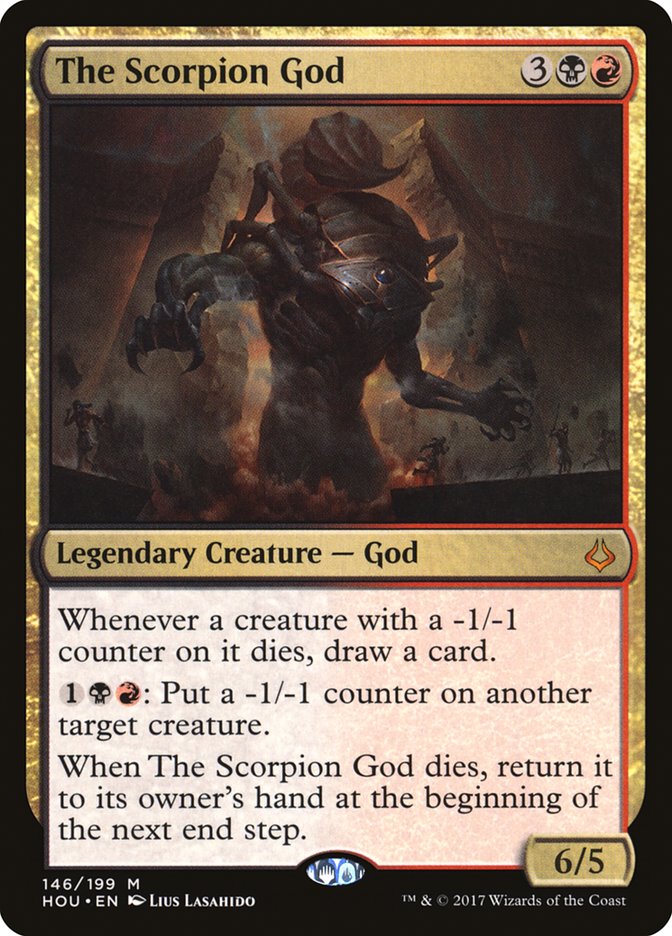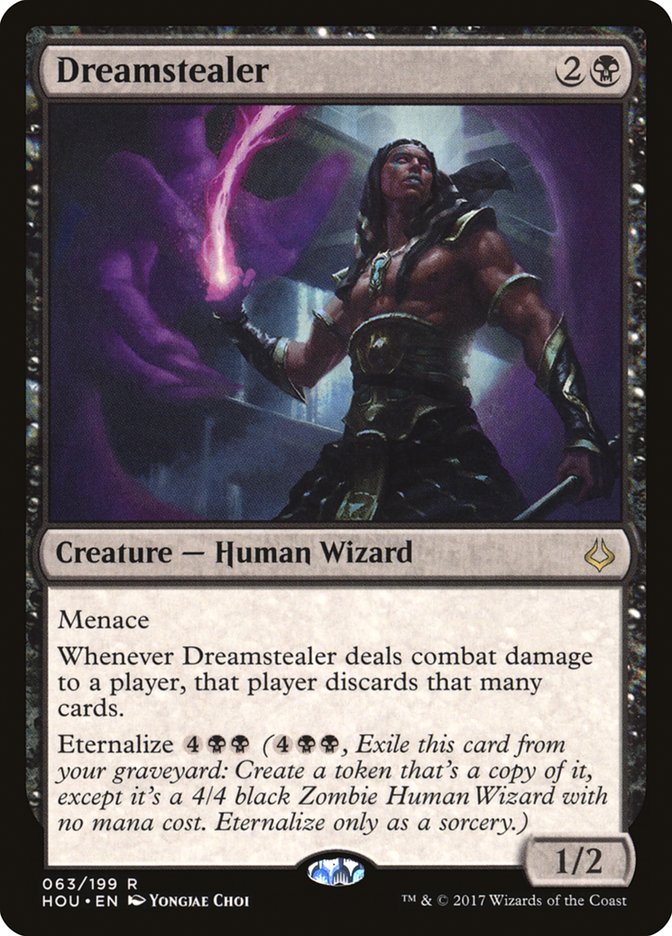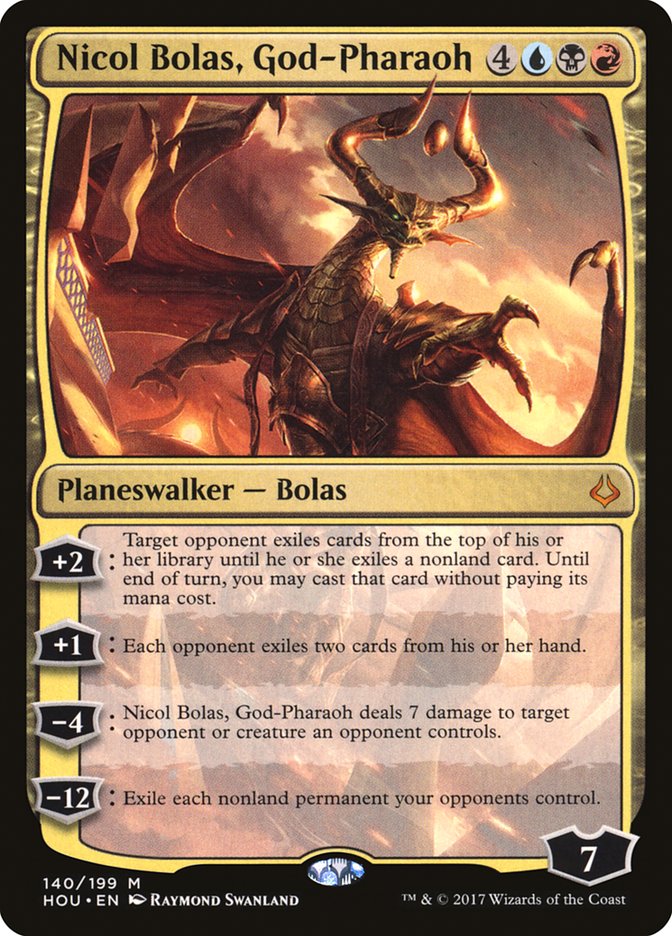Black’s back,
Red’s in the red,
Green’s in between,
White’s a little light,
Blues lose…
After a Pro Tour dominated by a clear best deck for the weekend, a lot of doubts lingered about the potential for this format. Five years without a Standard ban, and then three rounds of bans back-to-back? A little skepticism would have to be forgiven…
…however, if the first Grand Prix of the new format is any indication, it looks like we might have a real format on our hands!
The new Standard still appears to be nearly completely aggro (85.7% of the Top 32 metagame), but the balance of power has swung dramatically towards black aggressive decks that would appear to have the advantage over red. A few questions emerge:
- Which black aggro deck is best suited to combat the others?
- What strategies will rise to defeat black aggro?
- Can red do anything to regain its lost percentage?
Let’s start by taking a look at the weighted Top 32 metagame from Grand Prix Minneapolis:
|
Archetypes |
Top 32 Metagame |
|
Zombies |
36.5% |
|
B/G Aggro |
27.0% |
|
Mardu |
9.5% |
|
Red |
7.9% |
|
B/X Midrange |
6.3% |
|
U/R Control |
4.8% |
|
Eldrazi Aggro |
4.8% |
|
W/U Approach |
3.2% |
I’d like to take a look at the various top-performing strategies and then get into the deck I’m tuning for Grand Prix Denver.
While it may have been a weekend for Zombies and B/G, I still think the starting place for this format is with red decks powered by Ramunap Ruins.
Creatures (23)
- 4 Falkenrath Gorger
- 4 Bomat Courier
- 2 Kari Zev, Skyship Raider
- 3 Hazoret the Fervent
- 4 Ahn-Crop Crasher
- 2 Soul-Scar Mage
- 4 Earthshaker Khenra
Planeswalkers (2)
Lands (24)
Spells (11)

This build is fairly representative of the agreed-upon best direction for red aggro, as Cartouche of Zeal and Village Messenger are just too weak against other aggro decks. The ability to get a little more midrange after sideboard that we’ve seen so often lately is an important part of tuning the strategy in this mono-aggro meta.
Sweltering Suns, along with maxing out on Chandras and Glorybringers, lets us really change speed after sideboarding.
With God-Pharaoh’s Gift having nearly completely disappeared, Scavenger Grounds’s stock has fallen, making Sea Gate Wreckage a suitable replacement. It’s not that we’re using it all the time, it’s that when we do, it frequently matters.
Of course, not everyone is on board with moving away from Scavenger Grounds. For instance, Grand Prix Minneapolis champion Steve Locke’s build of Mono-Black Zombies adopted two copies in lieu of the usual copies of Westvale Abbey most Zombie decks pack.
Creatures (21)
- 1 Kalitas, Traitor of Ghet
- 4 Relentless Dead
- 4 Diregraf Colossus
- 4 Cryptbreaker
- 4 Lord of the Accursed
- 4 Dread Wanderer
Lands (25)
Spells (14)

A lot of Magma Sprays became Shocks this weekend, and no one benefited more than Zombies. Grasp of Darkness killing Hazoret is a big game, and the deck is generally just a solid choice in a red aggro field. The only other real maindeck adjustment Locke made was moving back towards Liliana’s Mastery rather than extra copies of Kalitas, Traitor of Ghet.
One of the biggest changes to the format as a result of Hour of Devastation is the printing of the pain Deserts, giving mono-color decks legitimately powerful lands to make up for the loss of creature-lands. Obviously, you don’t have to play mono-color to make good use of them, but they deal a lot less damage if you do.
Of course, they also enable Matter Reshaper, Thought-Knot Seer, and Reality Smasher better than we’ve seen in a while. We’ve already seen Eldrazi Red and Eldrazi White make an impact. What about Eldrazi Black?
Creatures (23)
- 2 Drana, Liberator of Malakir
- 2 Kalitas, Traitor of Ghet
- 4 Reality Smasher
- 3 Thought-Knot Seer
- 4 Matter Reshaper
- 4 Glint-Sleeve Siphoner
- 4 Gifted Aetherborn
Planeswalkers (3)
Lands (24)
Spells (10)

This deck is sweet.
Glint-Sleeve Siphoner has long gotten plenty of respect, but Gifted Aetherborn frequently gets left out. Frequently, there are better two-drops as a result of playing red or green or white. Even when not playing one of those, Walking Ballista has frequently gotten the nod. Well, the printing of Abrade changes that equation, and Ifnir Deadlands makes colorless a fine “second color.”
Gifted Aetherborn is also a pretty freaking fantastic metagame call in a format full of Falkenrath Gorgers and Shocks. Yeah, sure, they can Abrade it, but that’s going to be true of a lot of things. Plus, when they spend their second turn killing your two-drop, that really favors the deck with more three-, four-, and five-drops.
In for a penny, in for a pound. I do kind of love just how many must-kill threats Chris managed to fit into his list. The more removal people use on Gifted Aetherborn, the less they have for Drana. The more they use on Drana, the less they have for Kalitas.
Speaking of Kalitas, I love the use of Bontu’s Last Reckoning out of the sideboard, which combines with Kalitas for quite the wombo-combo. Even though Kalitas is dying, you’ll get Zombies and they won’t die.
While Mono-Black may have taken the trophy, there’s a good argument to be made for B/G Constrictor, particularly when you consider Brad Nelson and his brother Corey Baumeister both made the Top 8 with nearly identical builds, Corey advancing all the way to the finals.
Creatures (20)
- 3 Catacomb Sifter
- 4 Sylvan Advocate
- 3 Verdurous Gearhulk
- 4 Winding Constrictor
- 2 Rishkar, Peema Renegade
- 4 Walking Ballista
Planeswalkers (4)
Lands (24)
Spells (12)

So to begin with, these decks are neither B/G Energy nor B/G Delirium. They have the whole +1/+1 counter thing going on, but they’re not exactly going crazy there, either. Instead, the real innovation is the massive increase in 2/3s (similar to the Gifted Aetherborns and Dranas we just saw).
Catacomb Sifter over extra Rishkars or Tireless Tracker? Again, potentially much better in a format full of Shocks.
Sylvan Advocate instead of Glint-Sleeve Siphoner, Longtusk Cub, or Grim Flayer? Much better in a format full of Shocks.
Of course, once you don’t have Glint-Sleeve Siphoner or Longtusk Cub, you don’t really need Attune with Aether. Once you aren’t playing Grim Flayer, maybe you don’t need Traverse the Ulvenwald, either?
Oath of Nissa provides the fixing we were looking for but can much more easily find threats early. It even has the added bonus of avoiding awkwardness when our opponents play Scavenger Grounds!
Brad’s one of the best deck tuners of all time, and Corey’s no slouch either, so it’s not surprising to see such an excellent fresh take on such a well-established and well-explored archetype.
Corey’s list was nearly the same:
Creatures (21)
- 4 Catacomb Sifter
- 4 Sylvan Advocate
- 3 Verdurous Gearhulk
- 4 Winding Constrictor
- 2 Rishkar, Peema Renegade
- 4 Walking Ballista
Planeswalkers (3)
Lands (24)
Spells (12)

He’s got an Aethersphere Harvester instead of a fourth Nissa, and a fourth Catacomb Sifter instead of a fourth Grasp of Darkness. Beyond that, just a Crook of Condemnation and a second Lost Legacy in the sideboard, rather than Brad’s second Dispossess and fourth Transgress the Mind.
The other B/G Constrictor deck to Top 8 was Daniel Weiser’s somewhat more traditional approach, featuring Traverse the Ulvenwald, Grim Flayer, Tireless Tracker, and Kalitas, Traitor of Ghet.
Creatures (22)
- 3 Kalitas, Traitor of Ghet
- 4 Tireless Tracker
- 4 Grim Flayer
- 2 Verdurous Gearhulk
- 4 Winding Constrictor
- 1 Rishkar, Peema Renegade
- 4 Walking Ballista
Planeswalkers (3)
Lands (23)
Spells (12)

Not really a whole lot new here, though it is interesting to see the complete disappearance of Dissenter’s Deliverance. Between the banning of Aetherworks Marvel and the printing of Abrade, there’s just not as much call for it, particularly with tempo so important. Risking having to cycle a Dissenter’s Deliverance early could really disrupt how quickly and smoothly we come out, and these red decks really punish any stumbling.
Speaking of killing your darlings…
Creatures (19)
- 2 Archangel Avacyn
- 4 Thraben Inspector
- 2 Pia Nalaar
- 4 Scrapheap Scrounger
- 4 Toolcraft Exemplar
- 3 Walking Ballista
Planeswalkers (2)
Lands (25)
Spells (14)

Well, what do you know? The highest-finishing Mardu Vehicles pilot, Ray Huang, was packing just two maindeck copies of Gideon, Ally of Zendikar.
Red aggro is just brutal for Gideon, particularly cards like Ahn-Crop Crasher and Glorybringer, but also just Shock with a bunch of one- and two-drops.
What’s more, his only copies of Abrade are in his sideboard! Could Abrade be a victim of its own success? No one wants to play artifacts anymore, making there less need for artifact kill…
While Aethersphere Harvester isn’t that uncommon, Pia Nalaar is definitely a pretty loud statement in Huang’s desire to gain some percentage against red.
Robert Castro made the Top 8 with a similar list, but he went even further, dropping to just a single Gideon maindeck!
Creatures (20)
- 3 Archangel Avacyn
- 4 Thraben Inspector
- 2 Pia Nalaar
- 4 Scrapheap Scrounger
- 4 Toolcraft Exemplar
- 3 Walking Ballista
Planeswalkers (1)
Lands (25)
Spells (14)

Instead, he’s got a third Archangel Avacyn, though still maxing out on Gideons after sideboarding.
Doomfall is an excellent card right now. We’ve seen it in lots of sideboards today, but it’s also fine as a maindeck card for less aggressive of strategies. The ability to exile Hazoret is a big deal, and it’s also slot-efficient for matchups where you want some discard to break up a combo…
…a combo like Approach of the Second Sun into Approach of the Second Sun.
Lands (25)
Spells (35)

While blue would appear to be largely getting thrashed; Ward finished just outside the Top 8 with a U/W Control deck that replaces Torrential Gearhulk with Approach of the Second Sun. The ubiquity of Abrade makes winning with Gearhulk difficult, and the near-uniform swarm of aggro makes relying on such a narrow combo a lot less risky. Sure, the maindeck really struggles with counterspells, but who plays counterspells?
Just want to note: Authority of the Consuls is an incredibly sweet weapon against red aggro. If you start the game with it, you’re going to gain so much life, and that’s to say nothing of shutting the twenty haste creatures down. I would strongly consider some Authority of the Consuls in any slower white deck’s sideboard.
While this Standard may be mostly aggro, this is not the worst quantity of top strategies by recent standards. When a format is in flux but most of the strategies somewhat thematically linked, there is often opportunity to exploit them. That all the decks are aggro is part of the picture, but breaking the format down by color reveals even more:
|
Color |
Meta |
|
Black |
82.5% |
|
Red |
28.6% |
|
Green |
27.0% |
|
White |
20.1% |
|
Blue |
8.0% |
While red may be the baseline best, setting the pace for the format, black may be the best suited to combat it. What about combining them?
I discussed the B/R Midrange deck I’m tuning for Grand Prix Denver last week, and I’m definitely taking a good, long look at Nathan Lothamer’s Top 8 list from Minneapolis.
Creatures (12)
Planeswalkers (7)
Lands (26)
Spells (15)

The biggest addition Nathan has made is the adoption of Gifted Aetherborn in lieu of more removal or Glint-Sleeve Siphoner. We’ve already discussed Glint-Sleeve Siphoner’s vulnerabilities, and an over-reliance on removal can leave the B/R deck too reactionary to press advantages. Besides, it’s not like drawing all removal is good against these aggro decks. You need ways to actually gain advantages.
I’m really not sure on the right mix of removal yet, but there is an interesting tension between the desire to play Magma Spray to hit Zombies and Scrapheap Scrounger and the desire to play Fatal Push to hit Winding Constrictor and Sylvan Advocate.
I generally like the move away from draw-twos, as they are just so mediocre, and the last thing we want to do right now is take extra damage for no reason.
With so few counterspells or Cast Outs, I’m kind of intrigued by the miser’s Scorpion God maindeck (instead of sideboard). It’s an excellent way to take over a game that goes long and is extra-good against Grasp of Darkness and Dark Salvation, compared to another Goblin Dark-Dweller or Glorybringer.
I’m not 100% sold on Dreamstealer yet, but I could see it. I just worry that the presence of Gifted Aetherborn and Kalitas could leave us with a shortage of opponents truly vulnerable.
Here’s where I’m at so far, though I do want to work on improving the B/G matchup.
Creatures (12)
Planeswalkers (7)
Lands (26)
Spells (15)

I know it might seem silly, but there is a part of me eyeing that manabase and wondering if I might be able to get four Aether Hubs and maybe a couple of Spirebluff Canals in there. Alternatively, I would really not hate some Wandering Fumarole action.
Besides, how could I not play Nicol Bolas, God-Pharaoh…?


